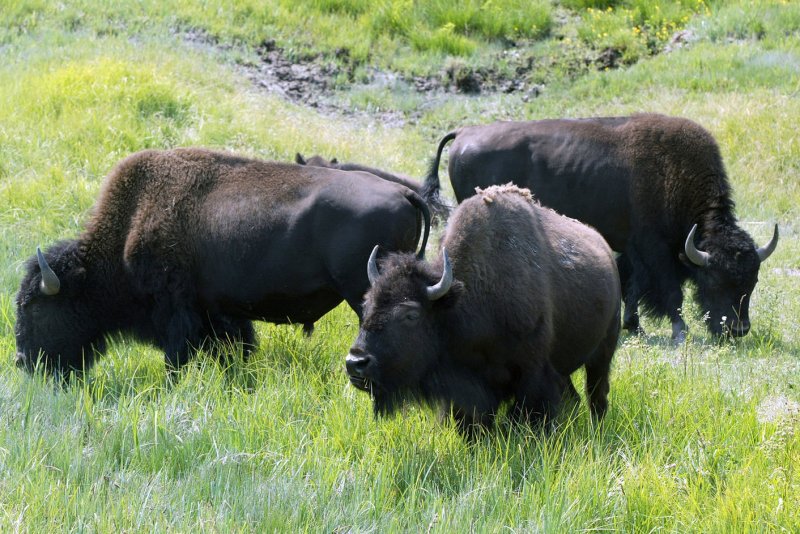American bison graze in a lush meadow in Yellowstone National Park, in Wyoming, July 29, 2006. File photo by UPI Photo/A.J. Sisco |
License Photo
BOZEMAN, Mont., July 3 (UPI) -- Brucellosis is a bacterial disease commonly carried by elk and bison in Yellowstone National Park. The disease can sometimes make its way into domestic cattle herds, causing miscarriages and other health problems.
This week, a panel of scientists was convened in Bozeman, Mont., to advise park officials and the U.S. Department of Agriculture on how best to manage wild and domestic herds to prevent the spread of disease. The meeting was called by the USDA's Animal and Plant Health Inspection Service, or APHIS.
Academics from the National Academies of Sciences met with park and agricultural policy makers, in addition to Montana State University officials, on Wednesday and Thursday. The meeting offered state and federal wildlife biologists, as well as livestock representatives, to offer their perspectives on the current situation.
"We want you to ... help us see a future path for actions we might take to address brucellosis in the Greater Yellowstone Area," Ryan Clarke, of APHIS, told the meeting attendees -- as reported by the Billings Gazette.
Fear of the spread of brucellosis has inspired the slaughter of hundreds of bison that wander outside the boundaries of Yellowstone. Yellowstone's herd was reduced by 900 this winter, with most being sent to local Native American tribes for slaughter. Ranchers prefer a more aggressive form of management, while conservationists are apprehensive about large scale culling programs.
A lot of people have strong opinions on how the animals should be managed, but not all of them are equally grounded in science.
"And even though their conception of how wildlife should be controlled and managed may have a foundation on Walt Disney, or on reality, for them it's very real," P. Ryan Clark, a veterinarian with the USDA, told Montana Public Radio.
By bringing in a team of experts, officials hope to lend some informed impartiality to the drafting of a new management plan. Additional meetings will take place in September and November, one of which will take place in Wyoming.
The panel -- which is being asked by APHIS to "lay a scientific foundation for any future actions that could be applied to contain or suppress brucellosis across the region" -- will deliver a final report in the spring of 2016.















